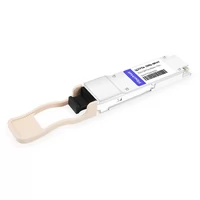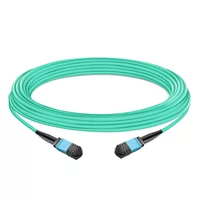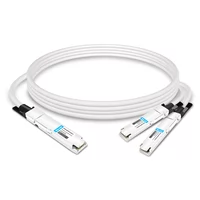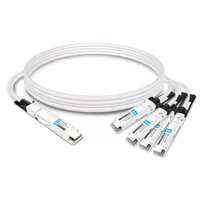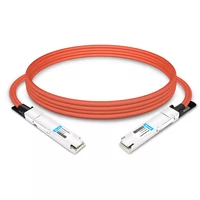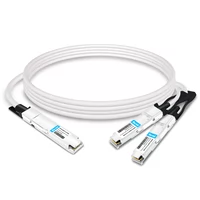In the present world, which depends on information, superfast networking solutions like Spectrum are indispensable for smooth and dependable data centre operations. With the advent of the Spectrum-4 Ethernet Switch by NVIDIA, there has been a massive leap in networking technology, which takes into consideration the growing needs of modern-day data centers. This article explains technical specifications, performance measures, and potential uses for this kind of switch, thus giving an idea of how it can improve efficiency and scalability within data centers. This inclusive review will provide all network engineers, managers, or any other person interested in technology everything they need to know about this new Ethernet switching solution from NVIDIA. Whether you work as a network engineer, manage data centers, or just love new gadgets – so let us get started right away!
Table of Contents
ToggleWhat is the NVIDIA Spectrum-4 Ethernet Switch?
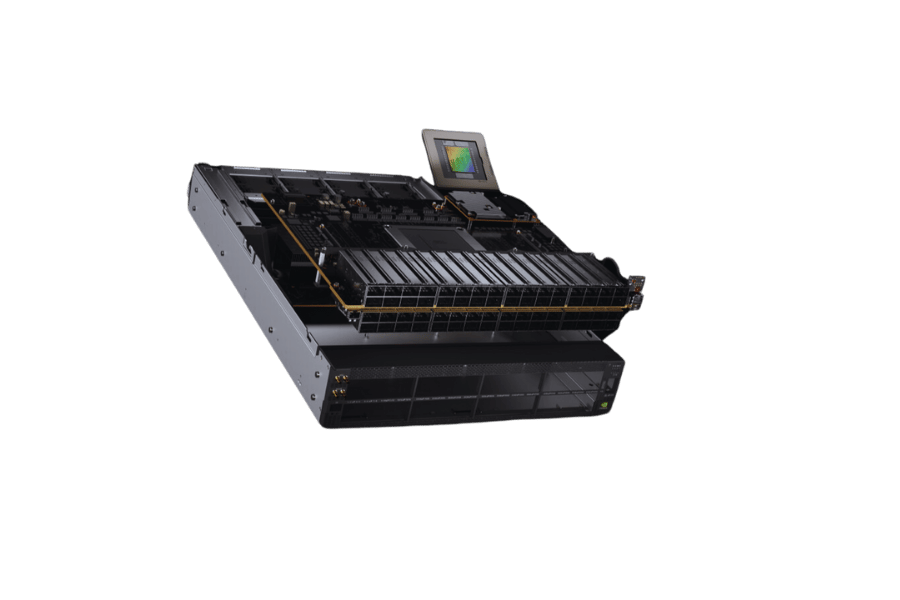
Overview of the NVIDIA Spectrum-4 Technology
The Spectrum-4 Ethernet switch from NVIDIA utilizes an advanced silicon architecture and high density to deliver unprecedented performance levels with low latency. With a bidirectional bandwidth capacity of 51.2Tbps, this switch has never been seen before in any other device on the market; such capability could be used for dealing with heavy traffic loads in today’s data centers. The key feature of future networks is scalability so that they can adapt easily as new technologies come up; this is why it supports 400G and 800G standards for Ethernet among others. In addition to, these innovative networking software packages provide for better visibility into what’s happening within the network itself while automating certain tasks, thereby improving security posture such that only necessary host connections are allowed, amongst other things critical for modern DC environments like these where we work centers should always remain protected at all times against any kind off unauthorized access attempts made either internally or externally towards them one can never be too careful about protecting his/her clients’ information because if compromised then not only will he/she lose their customers but also get sued for negligence if found guilty during court proceedings which might lead into bankruptcy thereby rendering oneself financially unstable forevermore up till kingdom come amen.
Distinctive Characteristics of Spectrum-4 Ethernet Switch
NVIDIA Spectrum-4 Ethernet Switch can be easily identified through the following characteristics;
- Port density: It has up to 128 ports of 400G or 256 ports of 200G that allow the network infrastructure to scale seamlessly.
- Performance like no other: This switch provides a bi-directional bandwidth capacity of 51.2 Tbps, which guarantees high throughput with low latency.
- Advanced telemetry: Real-time network monitoring and diagnostics are made possible by this switch’s inclusive advanced telemetry features thereby boosting visibility as well as performance optimization.
- Strong security: Integrated safety measures such as hardware-based encryption and secure booting guard against threats.
- Automation plus management: Automation is enhanced while operational complexity reduced through NVIDIA’s networking software which also enables streamlined management hence facilitating efficient resource allocation.
- Design for the future: The switch supports upcoming 400G and 800G Ethernet standards thus positioning itself well for future technological advancements besides offering investment protection through extended service life.
All these features combined together make this product exceptionally useful in contemporary data centers where it outperforms others in terms of performance, security, and scalability.
In comparison to Older Generations, such as Spectrum-3
Spectrum-4 Ethernet Switch has several improvements compared to its predecessor, the Spectrum-3. They are as follows:
- Port Density: With a capacity of two times (2x), Spectrum-4 has up to 128 ports of 400G, while Spectrum 3 only supports 64 ports at this speed.
- Bandwidth: The bandwidth capacity in spectrum 4 is doubled to reach 51.2 Tbps (2x) as opposed to spectrum 3, which offers only 25.6Tbps.
- Performance: Throughput enhancement and reduced latency stand out among the performance enhancements made on Spectrum 4.
- Telemetry: Enhanced telemetry capabilities for better network monitoring have been included in this version called spectrum four that belongs within the spectrum platform family.
- Security: Additional security measures, such as those based on hardware encryption and secure booting, have been incorporated into the new release named Spectrum Four instead of being an afterthought or add-on feature set.
- Automation: Spectrum-4 introduces improved network software that allows automation and management thus differentiating it from previous versions like spectrum three which lacked such functionalities altogether or had them implemented poorly if any at all were present there before now then should we even mention about these aspects once again since we’ve already said everything here once more?
- Future readinesss : One thing that sets apart spectrum four from other switches in its class is that it is compatible with; therefore will always be relevant regardless off how fast technology changes around us+800G Ethernet standards.
These improvements serve as a great step forward towards efficiency and scalability within modern data centers, making this upgrade paramount for any organization seeking optimal performance.
The NVIDIA SN5000 Series: Flagship Switches Powered by Spectrum-4 Technology
The Spectrum-4 Ethernet platform forms the foundation for NVIDIA’s SN5000 series, a family of high-density, open Ethernet switches designed for AI, cloud, and hyperscale data centers. These switches leverage the Spectrum-4 ASIC’s 51.2 Tbps bidirectional bandwidth (or 25.6 Tbps for lower-speed models) and advanced features like zero-touch RoCE, delivering exceptional performance in a compact 2U form factor. The series includes several models—SN5400, SN5600, SN5600D, and SN5610—each tailored to specific speed and deployment requirements while maintaining compatibility with NVIDIA’s Spectrum-X ecosystem for up to 1.6x faster AI processing.
Here’s a comparison of the key models:
| Model | Port Configuration | Max Speed | Throughput | Key Features and Differences | Applications |
|---|---|---|---|---|---|
| SN5400 | 64 QSFP-DD ports + 2 SFP28 ports | 400GbE | 25.6 Tbps | Lower-speed variant with QSFP-DD ports for 10-400GbE flexibility; supports up to 33.3 Bpps; ideal for cost-effective upgrades from previous generations; power consumption ~670W (typical); dimensions: 3.39” H x 17.2” W x 28.3” D; AC power supplies. | Entry-level AI clusters, cloud spines where 400GbE suffices. |
| SN5600 | 64 OSFP ports + 1-2 SFP28 ports | 800GbE | 51.2 Tbps | Flagship model with OSFP ports for 10-800GbE; low latency and shared packet buffer; variants include AC or DC power (e.g., 48VDC Busbar); power ~940W; secure boot and x86 CPU; supports VXLAN with 512K entries. | High-performance AI/HPC, GPU-dense environments like NVIDIA DGX systems. |
| SN5600D | 64 OSFP ports + 1 SFP28 port | 800GbE | 51.2 Tbps | Similar to SN5600 but optimized for DC environments with 48VDC power and MGX mounting; enhanced for telecom or edge data centers; same throughput and features; operating temp 0-35°C. | DC-powered setups, telco clouds, or specialized racks requiring robust power efficiency. |
| SN5610 | 64 OSFP ports + 2 SFP28 ports | 800GbE | 51.2 Tbps | Variant of SN5600 with extra SFP28 port for management; full 51.2 Tbps and 33.3 Bpps; emphasizes scalability with 512K flow counters and NAT entries. | Multi-tenant clouds, advanced SDN with extra connectivity options. |
All SN5000 models feature advanced security (e.g., MACsec up to 12.8Tb/s, secure boot), telemetry for real-time monitoring, and flexible OS options like NVIDIA Cumulus Linux. They excel in AI applications by integrating with NVIDIA GPUs and BlueField DPUs, supporting RoCE for efficient data movement and reducing latency in generative AI workloads. For example, the 800GbE models like SN5600 enable seamless scaling in supercomputing clusters, while the SN5400 offers a more accessible entry point for evolving networks.
Compared to earlier Spectrum generations, the SN5000 series doubles bandwidth and port density, making it future-proof for data explosion in AI and cloud computing. Data center operators can choose based on speed needs, power infrastructure, and topology—leaf, spine, or super-spine.
How Does NVIDIA Spectrum-4 Improve Data Center Performance?
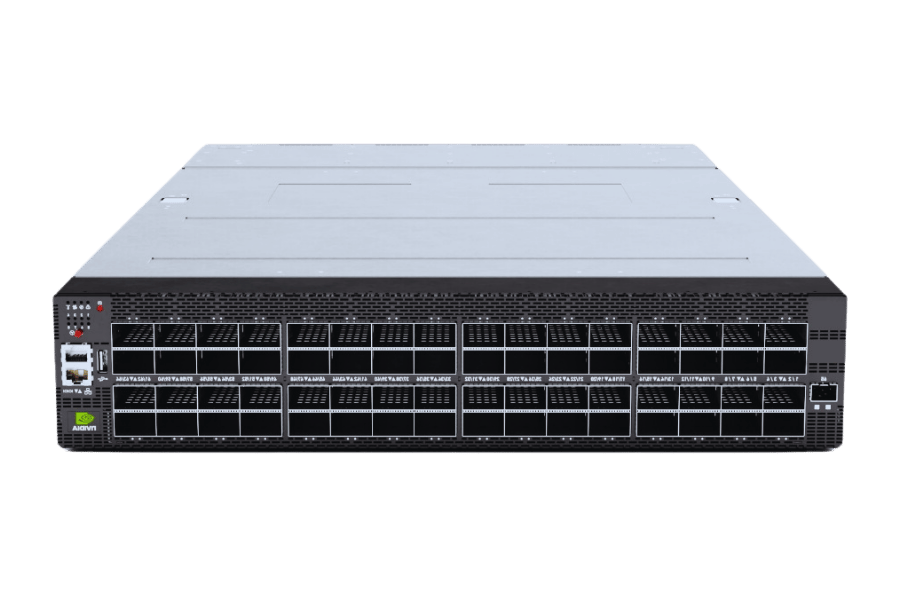
Speeding up AI and HPC with Spectrum-4
Ensuring unprecedented scalability and performance, the NVIDIA Spectrum-4 Ethernet Switch is capable of considerably accelerating artificial intelligence (AI) as well as High-Performance Computing (HPC) workloads, making it perfect for modern data centers. Spectrum-4 has the capacity to transfer data at a rate of 51.2 Tbps with 400G ports numbering up to 128, which, therefore, enables faster sharing of information, which is necessary for data-intensive computer programs run by machines with intelligence and supercomputers. To ensure that huge amounts of raw facts are transformed into useful knowledge within the shortest time possible, thus reducing waiting periods on queues while optimizing computational duties, this switch enhances speeds and reduces latencies through its increased bandwidths coupled with reduced delays themselves. The added advantage is that diagnosis happens within seconds due to advanced reporting tools fitted into it besides other automation features such as remote control telemetry, which shows where things are going wrong or right in real-time from afar off locations together with one-touch management system all designed towards ease use during complex situations involving artificial intelligence along side high power computing engines like those found at most enterprises today.
Optimizing Network Throughput and Latency
The ability to optimize network throughput and latency represents one of many critical functions performed by the NVIDIA Spectrum-4 Ethernet Switch, thus ensuring high-speed operation for data centers. This is achieved through an innovative design architecture that supports a maximum number of ports consisting of upto 128 pieces, each running at speeds not exceeding four hundred gigabytes per second (Gbps), thereby maximizing rates at which data can be moved between different locations while minimizing instances where traffic jams may occur due congestion problems arising within them. Another important characteristic worth noting about this device lies with its enormous backplane capacity, reaching fifty-one point two terabits per second(Tbps); hence, large volumes containing vast quantities of information can be shifted from one point to another in the shortest time possible, thereby avoiding unnecessary delays. It also incorporates more advanced features like telemetry, which provides real-time network performance data allowing quick identification and resolution of any potential issues arising from delays caused by long queues for packets waiting to be delivered or dropped due to congestion within these packets; all these combined together greatly improve overall performance of networks making them much faster than normal hence marking Spectrum-4 switch as an essential component used in current data center structures.
Benefits for Hyperscalers and Cloud Builders
Hyperscalers, along with cloud builders, will greatly benefit from deploying the NVIDIA Spectrum-4 Ethernet Switch because it comes with superior scalability, performance levels never seen before, and advanced functionalities built into it. The enormous capacity in terms of bandwidth(51.2 Tbps) that this particular product offers, coupled with being able to handle upto 128 ports supporting speeds up to four hundred gigabits per second (Gbps) allows such switches to serve very well big enterprises whose operations are cloud-based where there is need for massive sharing of information among different locations within their premises or even across wide areas covering multiple countries interconnected through high-speed links which may span several kilometers apart.. Lower latencies and higher throughput rates on processing large amounts data efficiently, thus improving service delivery standards clouds computing platforms boast simultaneous monitoring intelligence resource utilization while cutting down unnecessary expenses involved during these processes thanks mainly the telemetry feature set provided here; besides real time insights offered by automation functions included helps optimize costs management practices leading towards operational efficiency; therefore, agility reliability growth hyperscalers must consider spectrum -4 plus other options available today in order achieve desired outcomes quickly.
How does NVIDIA spectrum-4 work with GPUs and DPUs?
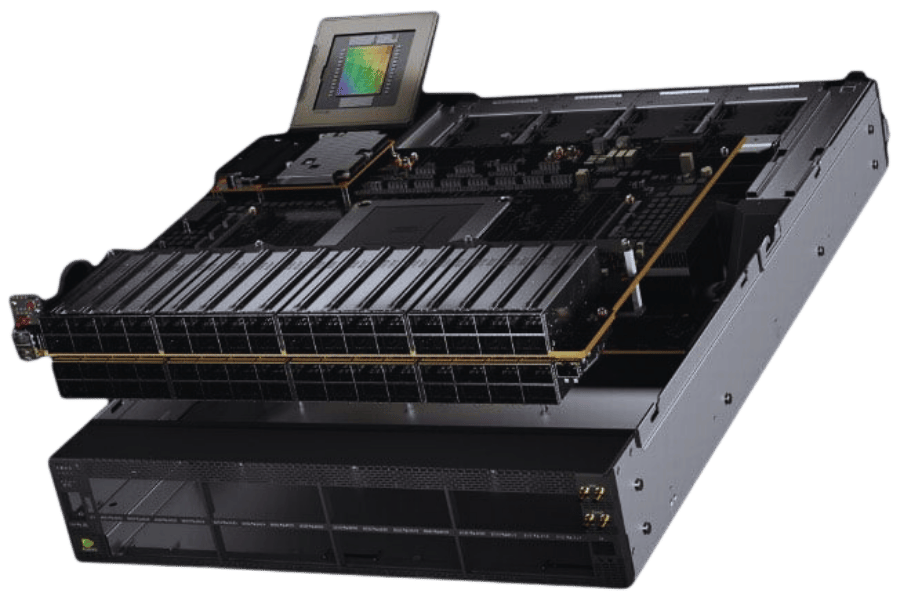
The integration of NVIDIA Spectrum-4 with NVIDIA H100 GPUs
The combination of NVIDIA Spectrum-4 and NVIDIA H100 GPUs ensures uninterrupted high-speed data transfer and processing capabilities that are indispensable for AI and data analytics workloads in today’s datacenters. Spectrum-4 establishes a network foundation of high throughput and low latency so that the H100 GPU can perform at its best by cutting down on the time it takes to transfer information from one place to another while making sure that the information is available promptly. This allows for rapid task execution, which utilizes large-scale computation power delivered through powerful processors embedded in graphic units (GPUs). The advanced telemetry as well as automation features incorporated into spectrum 4 also help manage these resources efficiently, thus enhancing reliability within an overall system performance improvement context.
Enhancing Workloads using Bluefield-3 DPUs
NVIDIA Spectrum-4 has been integrated with NVIDIA Bluefield-3 DPUs, which helps accelerate workload performance by moving key networking operations away from CPUs, thereby freeing up computing resources for other tasks. Among other things, inline encryption packet processing, among other intelligent datapath services, are provided at network interfaces by Bluefield three DPUs coupled with storage acceleration capabilities; this offload reduces CPU overhead, resulting in better utilization efficiency throughout systems covered, hence leading to enhanced application performances. Apart from reducing workloads imposed upon central processing units; distributed input/output control functions associated with bluefields three enhance scalability together with security during data transfers, thereby optimizing workload management across different types or forms of clouds along side centers so much needed operational reliability is achieved when both sides work together symbiotically towards common goals spanning many areas.
Spectrum-4 End-to-end Networking Solutions
NVIDIA Spectrum 4 offers complete end-to-end networking solutions spanning all parts of the path including server environments up to edge computing platforms like cloud environment settings. With such switches capable of high performance linked by unlimited connectivity and bandwidths, it becomes possible to have smooth communication between servers with superior data throughput as well as real-time network monitoring through functionalities like in-band telemetry, which gives room for proactive management of networks. In addition, when combined with DPUs and GPUs powered by NVIDIA Spectrum, four creates a strong, adaptable infrastructure that can handle different workloads across various industries, thus ensuring optimal performance levels all over the network where security matters most are taken care of.
What can NVIDIA Spectrum-4 be used for?

Applications in AI Workloads and Simulations
AI workloads and simulations are made better by NVIDIA Spectrum-4 since it provides ultra-fast connections, which are necessary for data-intensive tasks. This will quicken the processing of AI models and simulations through advanced switches and pairing support with GPUs and DPUs. Bottlenecks in transferring data are eliminated, thus allowing faster training and inference, which leads to higher performance in machine learning applications. Furthermore, real-time telemetry, together with diagnostics from Spectrum-4, offers valuable information that can help optimize AI operations, making them scalable across different sectors.
Deployment within Enterprise Data Centers and Hyperscalers
Enterprise data centers, as well as hyperscalers, greatly benefit from the high-speed performance improvements brought about by NVIDIA Spectrum-4, among other features within its portfolio like Mellanox technologies, etc. (or anything else). The main reason is that these places usually require large amounts of data to be transferred rapidly over short distances coupled with complex application requirements, which need low latency switches (this is why they love this product so much). Additionally, this system supports everything from Duct Tape up to 400G ports, ensuring compatibility over various workload types due to integration into a wider ecosystem, such as DPUs alongside other GPUs provided by NVIDIA itself; therefore, there isn’t any workload problem that cannot run smoothly under spectrum 4. In-band telemetry, when combined with advanced features, allows management teams at DCIM platforms to attain awareness concerning what is happening on their networks, hence leading to better resource utilization, reduced operational expenditure, plus stronger security postures while still delivering elastic robustness designed specifically for extremely large-scale data operation requirements demanded within enterprise computing environments today.
Role in Supercomputing and HPC Environments
Supercomputing and high-performance computing environments require massive amounts of data to flow through them very quickly, this is where spectrum four shines. Communication between computational nodes needs to be fast so that overall computational efficiency can be increased. For that reason, NVIDIA Spectrum-4’s ability to switch traffic with minimal delay at any given time plays an important role in such systems. Furthermore, this product can work together with other GPUs made by NVIDIA, which include DPUs and Mellanox technologies, allowing for seamless integration, thus enabling the execution of highly complex simulations as well as data processing tasks. Spectrum-4 brings out robustness within HPC by providing insights based on real-time diagnostics plus in-band telemetry, hence ensuring reliability during compute-intensive domains like scientific research or engineering where huge amounts of information are involved.
Which is the Ethernet switch Spectrum 4?
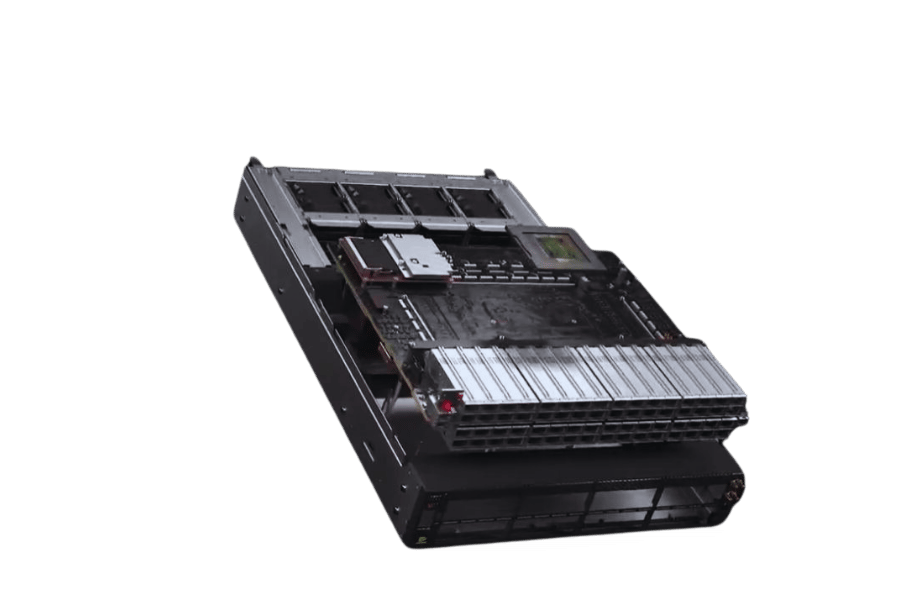
Progressive, adaptive routing and ROCE
NVIDIA Spectrum-4 makes significant strides in adaptive routing and RDMA over Converged Ethernet (RoCE), further establishing its position within the Spectrum family. Adaptive routing works by choosing the optimum path for data packets dynamically, thus reducing congestion more efficiently than anything else can. Because this feature is capable of dealing with high-performance environments where traffic patterns are unpredictable and very demanding, it is important. In addition, RoCE support in spectrum four allows servers to communicate with each other directly through low latency high throughput channels created by ethernet connections between them. Advanced hardware optimization has enabled ultra-low latency switching fabric that supports increased throughput necessary for rapid data transfer among applications within HPCs while ensuring power consumption does not go beyond certain limits hence conserving energy at the same time.
Performance & Power Efficiency Improvements
The new NVIDIA spectrum-4 comes with many features aimed at enhancing performance as well as power efficiency. The use of advanced hardware optimizations ensures that this device delivers ultra-low latency which guarantees higher speeds during data transfers between different applications running within high demand HPCs.Power saving capabilities have been introduced into this product through energy management techniques like dynamic allocation of power resources coupled with sleep modes that are able to intelligently put some parts of the device to rest when they aren’t being used thereby reducing overall power consumption while still meeting required performance levels. Spectrum 4 introduces various enhancements targeting performance and power efficiency. Utilizing advanced hardware optimizations, its switching fabric delivers ultra-low latency and increased throughput, ensuring rapid data transfer within high-demand HPC environments.In terms of power efficiency, Spectrum 4 employs innovative energy management techniques such as dynamic power allocation and advanced sleep modes which significantly reduce power consumption without compromising performance. Data centers can deal with workloads much better now thanks to these improvements; they save on electricity, thus striking a balance between environmental sustainability and great functionality.
Ethernet Networking: Trends & Future Developments
Ethernet networking is expected to undergo significant advancements in the near future due to changes in technology and demand. The first development is that there will be higher bandwidths, which can support more data-intensive applications such as artificial intelligence, machine learning, and big data analytics; this means we should expect 400GbE or even 800GbE ports to become common very soon. Cybersecurity is paramount for any business today thus another trend could involve integrating additional security measures into ethernet networks beyond traditional firewalls so as to safeguard against sophisticated threats like ransomware. One of these additional measures may include real-time data transmission through time-sensitive networking alongside other advanced network functionalities which can detect such threats early enough before they cause major damages but also enable faster response times when dealing with them. Convergence between storage networks based on Ethernet under protocols like NVMe-oF will not only make it easier for users to access their files but also improve overall performance since reading large amounts of information from disks tends. Also, automation orchestration functions within SDN and IBN environments could optimize some network operations thus reducing complexity while at the same time enhancing agility among different components involved during the communication process In order to meet the current needs of modern enterprises, ethernet systems need continuous innovation otherwise, they won’t be able to handle all tasks efficiently at once.
Reference Sources
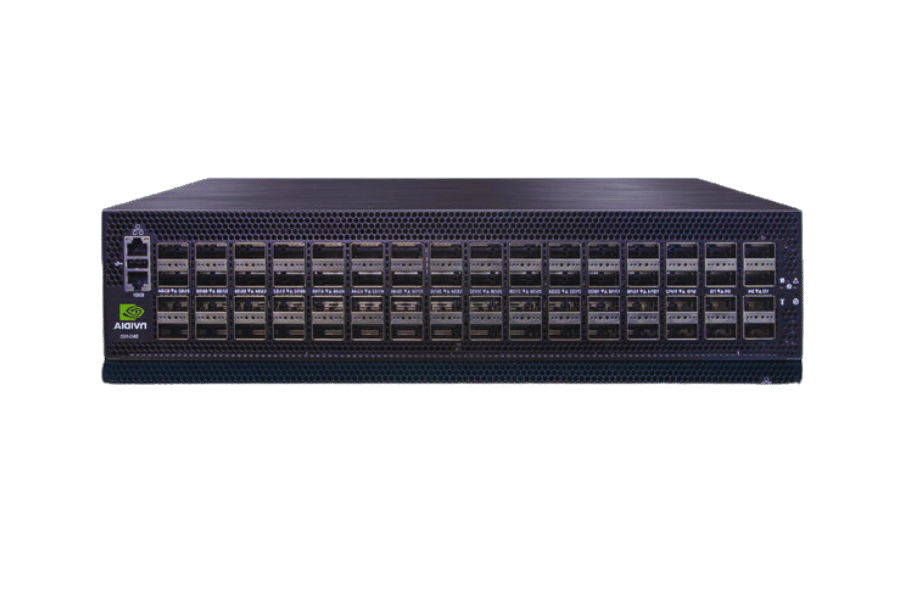
Frequently Asked Questions (FAQs)
Q: What is the Spectrum-4 switch introduced by NVIDIA?
A: What is the latest Ethernet switch called Spectrum-4 that is made by NVIDIA?
Q: How does the Spectrum-4 switch benefit HPC and AI applications?
A: Why would you use the Spectrum-4 switch for HPC and AI applications?
Q: What makes the Spectrum-4 ASIC unique?
A: What sets apart the Spectrum-4 ASIC from other chips?
Q: How does NVIDIA’s Ethernet platform differ from its InfiniBand solutions?
A: Could someone explain what distinguishes Nvidia’s Ethernet platform from their InfiniBand solutions?
Q: What role does the BlueField-3 DPU play in the new Spectrum-4 Ethernet platform?
A: The new BlueField 3DPU plays a role of improving overall network performance and efficiency for data-intensive applications.
Q: When will the new Spectrum-4 ethernet switch be released?
The latest Spectrum-4 Ethernet switch is likely to be available in the last months of this year, enabling data centers to take advantage of more powerful networking capabilities.
Q: In what way does the switch Spectrum-4 support NVIDIA’s AI initiatives?
A: The infrastructure required for fast data transfer and low latency communication that are important when training and deploying generative AI models is created by spectrum 4 switches which therefore supports NVIDIA’s AI initiatives.
Q: What is the peak data transfer rate for a Spectrum-4 switch?
A: A record-setting benchmark in terms of performance within data centers was achieved with spectrum 4 switches that have a maximum data transfer speed of 51.2 terabits per second.
Q: Which software underpins the Spectrum-4 networking platform?
A: For path optimization and enhanced security as well as reliability during operations on the datapath, the Spectrum 4 networking platform relies upon libraries, among other tools provided by NVIDIA DOCA.
Q: Who is Kevin Deierling and what role does he play with regards to the Spectrum-4 switch?
A: Kevin Deierling serves as an executive at NVIDIA who oversees network products such as their line-up of spectrum 4 switches; he helps set strategic goals for development within this area while also steering overall direction so as to ensure success can be achieved in different markets through these offerings.
Related Products:
-
 NVIDIA MMA4Z00-NS400 Compatible 400G OSFP SR4 Flat Top PAM4 850nm 30m on OM3/50m on OM4 MTP/MPO-12 Multimode FEC Optical Transceiver Module
$550.00
NVIDIA MMA4Z00-NS400 Compatible 400G OSFP SR4 Flat Top PAM4 850nm 30m on OM3/50m on OM4 MTP/MPO-12 Multimode FEC Optical Transceiver Module
$550.00
-
 NVIDIA MMA4Z00-NS-FLT Compatible 800Gb/s Twin-port OSFP 2x400G SR8 PAM4 850nm 100m DOM Dual MPO-12 MMF Optical Transceiver Module
$650.00
NVIDIA MMA4Z00-NS-FLT Compatible 800Gb/s Twin-port OSFP 2x400G SR8 PAM4 850nm 100m DOM Dual MPO-12 MMF Optical Transceiver Module
$650.00
-
 NVIDIA MMA4Z00-NS Compatible 800Gb/s Twin-port OSFP 2x400G SR8 PAM4 850nm 100m DOM Dual MPO-12 MMF Optical Transceiver Module
$650.00
NVIDIA MMA4Z00-NS Compatible 800Gb/s Twin-port OSFP 2x400G SR8 PAM4 850nm 100m DOM Dual MPO-12 MMF Optical Transceiver Module
$650.00
-
 NVIDIA MMS4X00-NM Compatible 800Gb/s Twin-port OSFP 2x400G PAM4 1310nm 500m DOM Dual MTP/MPO-12 SMF Optical Transceiver Module
$900.00
NVIDIA MMS4X00-NM Compatible 800Gb/s Twin-port OSFP 2x400G PAM4 1310nm 500m DOM Dual MTP/MPO-12 SMF Optical Transceiver Module
$900.00
-
 NVIDIA MMS4X00-NM-FLT Compatible 800G Twin-port OSFP 2x400G Flat Top PAM4 1310nm 500m DOM Dual MTP/MPO-12 SMF Optical Transceiver Module
$1199.00
NVIDIA MMS4X00-NM-FLT Compatible 800G Twin-port OSFP 2x400G Flat Top PAM4 1310nm 500m DOM Dual MTP/MPO-12 SMF Optical Transceiver Module
$1199.00
-
 NVIDIA MMS4X00-NS400 Compatible 400G OSFP DR4 Flat Top PAM4 1310nm MTP/MPO-12 500m SMF FEC Optical Transceiver Module
$700.00
NVIDIA MMS4X00-NS400 Compatible 400G OSFP DR4 Flat Top PAM4 1310nm MTP/MPO-12 500m SMF FEC Optical Transceiver Module
$700.00
-
 NVIDIA(Mellanox) MMA1T00-HS Compatible 200G Infiniband HDR QSFP56 SR4 850nm 100m MPO-12 APC OM3/OM4 FEC PAM4 Optical Transceiver Module
$139.00
NVIDIA(Mellanox) MMA1T00-HS Compatible 200G Infiniband HDR QSFP56 SR4 850nm 100m MPO-12 APC OM3/OM4 FEC PAM4 Optical Transceiver Module
$139.00
-
 NVIDIA MFP7E10-N010 Compatible 10m (33ft) 8 Fibers Low Insertion Loss Female to Female MPO Trunk Cable Polarity B APC to APC LSZH Multimode OM3 50/125
$47.00
NVIDIA MFP7E10-N010 Compatible 10m (33ft) 8 Fibers Low Insertion Loss Female to Female MPO Trunk Cable Polarity B APC to APC LSZH Multimode OM3 50/125
$47.00
-
 NVIDIA MCP7Y00-N003-FLT Compatible 3m (10ft) 800G Twin-port OSFP to 2x400G Flat Top OSFP InfiniBand NDR Breakout DAC
$260.00
NVIDIA MCP7Y00-N003-FLT Compatible 3m (10ft) 800G Twin-port OSFP to 2x400G Flat Top OSFP InfiniBand NDR Breakout DAC
$260.00
-
 NVIDIA MCP7Y70-H002 Compatible 2m (7ft) 400G Twin-port 2x200G OSFP to 4x100G QSFP56 Passive Breakout Direct Attach Copper Cable
$155.00
NVIDIA MCP7Y70-H002 Compatible 2m (7ft) 400G Twin-port 2x200G OSFP to 4x100G QSFP56 Passive Breakout Direct Attach Copper Cable
$155.00
-
 NVIDIA MCA4J80-N003-FTF Compatible 3m (10ft) 800G Twin-port 2x400G OSFP to 2x400G OSFP InfiniBand NDR Active Copper Cable, Flat top on one end and Finned top on other
$600.00
NVIDIA MCA4J80-N003-FTF Compatible 3m (10ft) 800G Twin-port 2x400G OSFP to 2x400G OSFP InfiniBand NDR Active Copper Cable, Flat top on one end and Finned top on other
$600.00
-
 NVIDIA MCP7Y10-N002 Compatible 2m (7ft) 800G InfiniBand NDR Twin-port OSFP to 2x400G QSFP112 Breakout DAC
$190.00
NVIDIA MCP7Y10-N002 Compatible 2m (7ft) 800G InfiniBand NDR Twin-port OSFP to 2x400G QSFP112 Breakout DAC
$190.00







